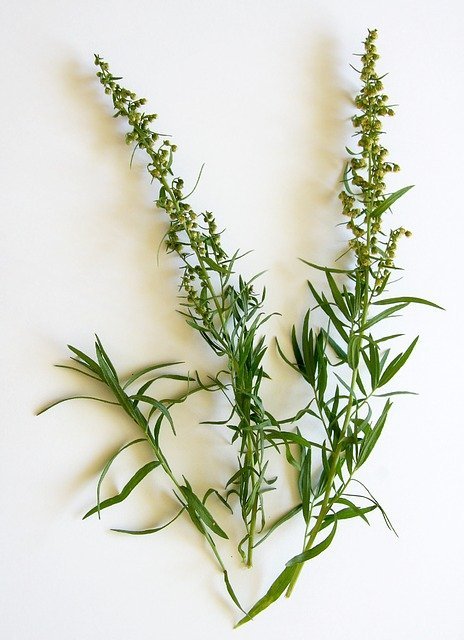

How to Dry Tarragon: A Comprehensive Guide
Dehydrating is a way to preserve food without using any artificial preservatives. It forces the moisture out of the dehydrated food and results in an end product lasting for long periods. This article will discuss how to dry tarragon in a dehydrator, which is one method you can use to dehydrate your herbs at home. Growing tarragon in a backyard herb garden provides easy access to fresh herbs, enhancing your culinary creations and ensuring a constant supply for preservation.
- What Is Tarragon?
- Choosing the Right Tarragon from Your Herb Garden
- Preparing Fresh Herbs for Drying
- How to Dry Fresh Tarragon Leaves
- Post-Drying Care
- How Do I Store Excess Dried Tarragon Leaves
- The Health Benefits of Tarragon from Your Herb Garden
- Why You Should Use a Food Dehydrator For Your Dried Herbs
- Common Mistakes to Avoid
- Recipes That Require Dehydrated Tarragon
- Alternative Drying Methods
- Conclusion:
- FAQ
What Is Tarragon?
Tarragon is a leafy-green herb that adds an elegant and refreshing flavor to any dish. It can be obtained fresh or dried in every season, adding its delicate licorice taste. Tarragon complements fish and chicken dishes well, but it also works wonderfully as a salad dressing flavorsome addition for sauces!
Tarragon has been highly praised throughout history in French cooking recipes and many other culinary traditions worldwide because of how flavorful it is on top of being aromatic. Cooks everywhere love including tarragon leaves into their favorite food items like salads dressings, sauces, and meat-based recipes since they bring out a lovely sense of springtime delicacy. Preserving fresh garden herbs, including tarragon, in airtight containers is essential to prevent moisture and mold, ensuring their availability for year-round use.
Choosing the Right Tarragon from Your Herb Garden
When selecting tarragon from your herb garden, it’s essential to choose the right variety for drying. French tarragon (Artemisia dracunculus) is the most commonly used variety for drying, as it has a more delicate flavor and aroma compared to Russian tarragon (Artemisia dracunculoides). Look for tarragon plants with bright green leaves and a slightly bitter aroma. Avoid tarragon plants that are flowering, as they may have a less intense flavor.
Preparing Fresh Herbs for Drying
Before drying your fresh herbs, it’s crucial to prepare them properly to ensure the best flavor and aroma. Start by washing the herbs gently with cool water to remove any dirt or debris. Pat the herbs dry with a paper towel to remove excess moisture. Remove any stems or leaves that are damaged or discolored, as they can affect the quality of the dried herbs. For tender leaf herbs like basil and lemon balm, you can also trim off the leaves from the stems to promote even drying.
How to Dry Fresh Tarragon Leaves
Drying tarragon with a dehydrator is easy! You’re want to make sure you have the right equipment for this, though. If you don’t already own a dehydrator, then I recommend getting one before starting your project. It’s not that expensive and will save so much time in drying out your favorite herb or spice! Drying fresh herbs can enhance flavor, offer cost savings, and provide a longer shelf life, making them a practical choice for year-round culinary use.
- Firstly you need to wash the tarragon leaves to make sure they are free of any debris or dirt. Do not skip this step because dehydrating tarragon leaves with bacteria will put you at risk for food poisoning!
- Then, lay the herb out on a dehydrator tray, they will shrink as they dry, but make sure not to pile them up too high so that air can circulate properly and get into each stem evenly – this is very important for a successful outcome!
- Next, set it to dry according to your dehydrator’s settings instructions. I dehydrated mine at 95 Fahrenheit for four to six hours ( this will depend on your appliance and the humidity level of the area). A microwave oven can be used as an alternative method for drying small quantities of tarragon, although it may not be the best option.
- Tip: Make sure to check after three hours.
- To check if they are ready, you’ll want to take a stem from the tray ( Make sure to let it cool, then give it a check if it is done). If it is brittle enough to snap, then the dehydrating tarragon leaves are done!.
- Once the dehydrating process is completed, remove the leaves from the stems of the tarragon.
Now that your dry tarragon is ready, you can chop the leaves to store them for further use in your dishes.
Post-Drying Care
After drying your herbs, it’s essential to store them properly to maintain their flavor and aroma. Store the dried herbs in airtight containers, such as glass jars or paper bags, to keep them fresh. Keep the containers away from direct sunlight, heat, and moisture, as these can cause the herbs to lose their flavor and aroma. You can also store excess dried herbs in bulk containers or vacuum-sealed bags to keep them fresh for longer.
How Do I Store Excess Dried Tarragon Leaves
I recommend storing dehydrated tarragon in an airtight container. Vacuum sealed bags and mason jars are great options! Ensure to keep it away from direct sunlight, fatty foods, and humidity so that the leaves stay fresh for a more extended time. Additionally, storing bulk dried herbs in airtight containers in a cool, dry, and dark place is crucial to maintain their freshness. The moisture content of tender herbs, like tarragon, can cause them to mold if not dried quickly during preservation.
The Health Benefits of Tarragon from Your Herb Garden
- Tarragon is a low-calorie, low-carb food that packs in nutrients for your health.
- Tarragon is a good source of iron and manganese.
- May improve sleep
Why You Should Use a Food Dehydrator For Your Dried Herbs
- A dehydrator will stop herbs from getting moldy when stored properly. Drying your own herbs with a food dehydrator is simple and accessible, even for beginners.
- You can make batches of dehydrated herbs and store them for use throughout the year. Using a very cool oven is another effective method for drying herbs, preserving their flavor and preventing mold.
- It saves you money by not having to buy dried herbs from the store.
Common Mistakes to Avoid
When drying herbs, there are several common mistakes to avoid to ensure the best results. One of the most common mistakes is not drying the herbs quickly enough, which can cause them to mold or lose their flavor. Another mistake is overcrowding the drying area, which can prevent the herbs from drying evenly. Additionally, using high heat or direct sunlight can cause the herbs to lose their flavor and aroma. Finally, not storing the dried herbs properly can cause them to lose their flavor and aroma over time. By avoiding these common mistakes, you can ensure that your dried herbs are of the highest quality and flavor.
Recipes That Require Dehydrated Tarragon
Tarragon is a delicate herb that can be used in many different dishes. Here are some ways to use tarragon:
- Add it to fried or scrambled eggs. Dehydrated tarragon can also be used in herb blends for added flavor.
- Garnish on roasted chicken. Fresh basil can also be preserved using similar methods for use in various recipes.
- Add it into sauces, such as pesto or aioli.
- Creamy Tarragon Chicken Salad
- Using oil to preserve tarragon can create infused oils for salad dressings or finishing dishes.
- And much more!
Alternative Drying Methods
There are several alternative drying methods you can use to dry herbs like tarragon. Here’s one of them: oven drying tarragon.
Preheat your oven to it’s lowest temperature setting. This is usually around 150°F. Place your tarragon leaves in a single layer on a baking sheet I lined with parchment paper. Place the baking sheet in the oven and dehydrate the tarragon for 1 to 2 hours. Check on it often as it can burn easily.
You can also dry tarragon in your microwave oven. This is a super quick way to dry herbs. Place a single layer of tarragon leaves on a paper towel. I set my microwave on high and nuked the tarragon for 30 seconds. Check on it and stir it. Repeat until the leaves are dry and crumbly.
The old fashioned way to dry tarragon is to hang it. Tie small bunches of the leaves with a rubber band and hang them upside down in a warm, dark, dry place. You can do this in a closet or under a porch. It will take about 1 to 2 weeks for the leaves to dry completely.
Conclusion:
I hope this recipe guide has been helpful for your dehydrating tarragon needs. Let me know in the comments, on social media, or by using the contact form if you have any other questions about using a food dehydrator!
FAQ
What is the best way to dry fresh tarragon?
The best way to dry fresh tarragon is by using a dehydrator, as it provides consistent results and preserves the herb’s flavor and aroma. Simply wash your tarragon leaves, place them in a single layer on the dehydrator tray, and set the temperature to around 95°F. It usually takes four to six hours, depending on your appliance and local humidity. This method ensures your tarragon remains flavorful and aromatic, ready to enhance your dishes throughout the year.
Is it better to freeze or dry tarragon?
Whether to freeze or dry tarragon depends on your preference and intended use. Drying tarragon is excellent for preserving its flavor for long-term use and is perfect for adding to cooked dishes. On the other hand, freezing tarragon retains its fresh taste and is ideal for recipes that require a burst of fresh herb flavor. Both methods have their benefits, so you might find it useful to try both and see which suits your cooking style best!
Can I dry tarragon in the oven?
Absolutely! Drying tarragon in the oven is a convenient method if you don’t have a dehydrator. Preheat your oven to its lowest setting, usually around 150°F. Arrange the tarragon leaves in a single layer on a baking sheet lined with parchment paper. Place the sheet in the oven and let the tarragon dry for about 1 to 2 hours, checking frequently to prevent burning. It’s a simple and effective way to preserve your herbs.
What part of tarragon do you use?
When using tarragon, the leaves are the star of the show! They are packed with flavor and are the part most commonly used in cooking. Simply strip the leaves from the stems before drying or using them fresh. Tarragon leaves add a delightful anise-like flavor to a variety of dishes, making them a wonderful addition to your culinary creations. Whether fresh or dried, these leaves will elevate your meals with their unique taste.
